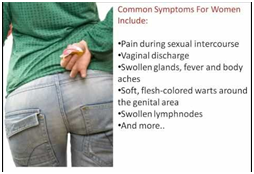Knowing and Watching Out for Signs of Sexually Transmitted Women's Diseases
There is logic in protected sex; it prevents the spread of contagious diseases that can be transmitted from one person to another during the intimate union of two people. There are about 25 types of sexually transmitted diseases (STDs) that can be transmitted through genital, anal and oral sex. There is a wide range of manifestations or signs of sexually transmitted women's diseases. So if you can't abstain but want to avoid getting an STD, make use of toys instead, and you can find out more here about those.

What is the value of knowing the signs of sexually transmitted diseases in women? It is possible that a woman has STD and does not know about it. Unfortunately, even women in monogamous relationships can experience STD with a polygamous boyfriend or husband. There are certain diseases that are asymptomatic like Chlamydia. There are those that have nonspecific symptoms or have similar symptoms that are often confused like a bladder infection and gonorrhea. If you haven't been tested yet, and you want to have fun with your partner, you might as well do with couples sex toys for the meantime.
One thing is certain, early diagnosis is important for STD to be treated. If left untreated, many sexually transmitted women's diseases can lead to severe infections and infertility. It helps to be familiar with the signs and symptoms of STD.
· Chlamydia is the most common of all the STDs, but most are undiagnosed because the signs are not manifested until about 3 weeks after exposure. At this time, the infection can spread, but at other time these are just mild and passing. Interestingly, this is most prevalent among younger people. If ever signs of Chlamydia appear, these include vaginal discharge, spotting between monthly periods and burning sensation when urinating. This can also be transmitted from mother to the baby during vaginal delivery.
· Gonorrhea ranks next to Chlamydia and like Chlamydia, it is also under-diagnosed. It is a bacterial infection that may manifest signs and symptoms from 2 to 10 days after exposure. However, just like Chlamydia, it may be asymptomatic or with nonspecific symptoms. Symptoms that resemble bladder infection include pain or burning sensation during urination, vaginal discharge with pus or blood, pain or tenderness on the abdomen, heavier than usual menstrual flow, and spotting between periods.
· Trichomoniasis or trich is an STI (sexually transmitted Infection) that is caused by a unicellular parasite called "Trichomonasvaginalis" that can be transmitted during copulation, though other modes of transmission are possible. The signs of this STD include foul-smelling vaginal discharge, itchy genitalia, and intense burning pain when urinating or having intercourse.
· Human papilloma virus (HPV) causes HPV and genital warts. This is common and about half of sexually active adults may experience this at some point in their lives. There are over 40 strains of this virus. Some can increase the risk of cervical cancer, vulvar cancer, anal cancer, and vaginal cancer among women. Some may not manifest symptoms. Some manifest signs like warts in the genital area or on the inner thighs or lesions in the vagina or cervix, and you would do well to know more about the signs.
These are just some of the common STDs. There are many other diseases such as scabies, syphilis, thrush, hepatitis, etc., and it will help if you can learn more about those. A woman can never be absolutely protected from these afflictions. Prudence and protected sex are the best the solutions, but knowing the different signs of sexually transmitted women's diseases to watch out for is also good defence.